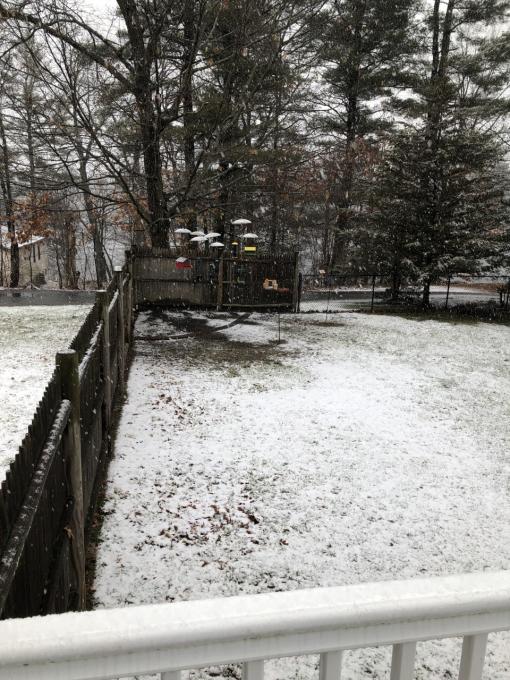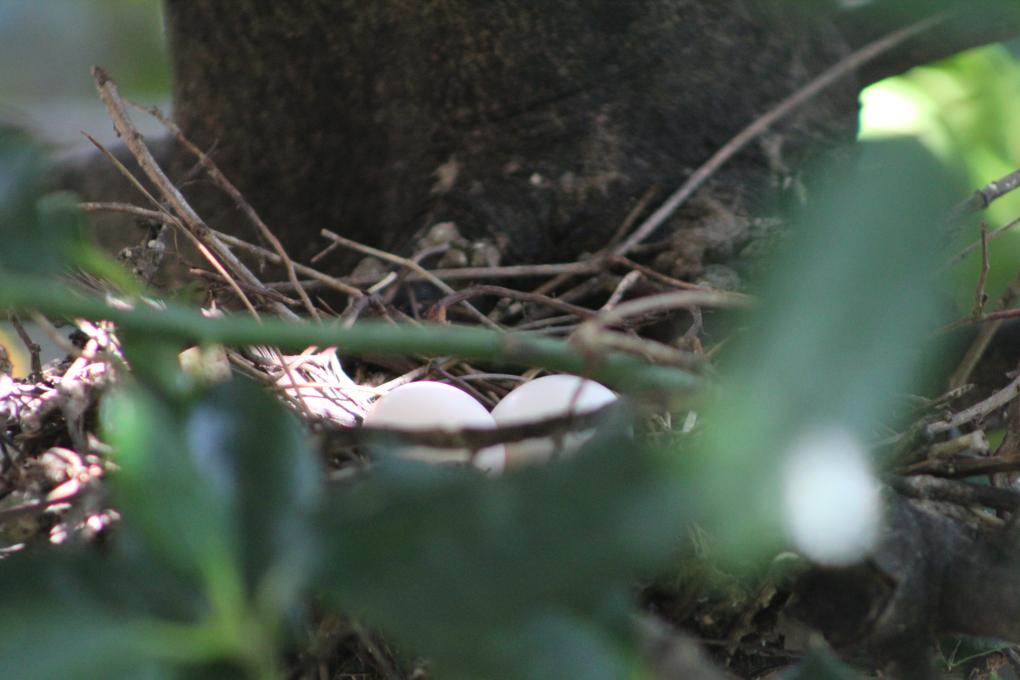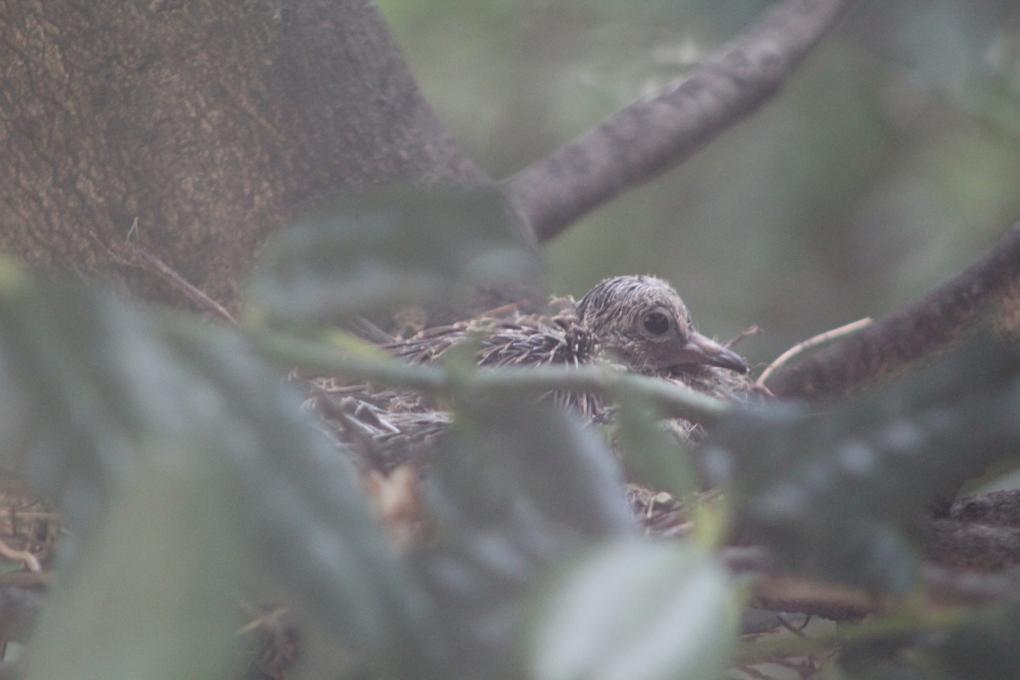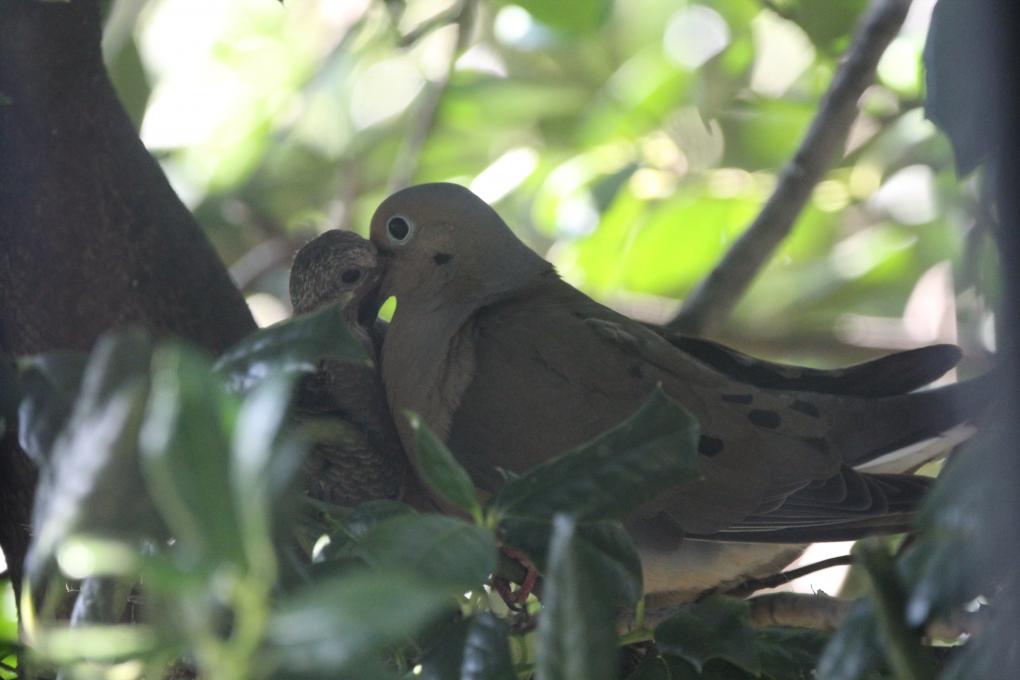The Cornell Lab Bird Academy › Discussion Groups › Joy of Birdwatching › Activities: Keeping Track of Your Birdwatching
-
Bird AcademyBird AcademyShare your experience participating in this lesson's activities. Comment on as many or as few activities as you'd like.You must be enrolled in the course to reply to this topic.
-
Activity 1: I had been using eBird to track birds I see and it is convenient since I typically have my phone handy so I don't forget. Since going through this lesson though, I've been keeping a little notebook handy to write down my observations instead. One thing I like about the notebook method is that it is a little faster and I can record behavioral observations together with specifics about the physical characteristics of the birds more quickly.Then when I have time to look it up later, I can verify that I have the right species without missing out on watching the bird or misidentifying what I saw on eBird. I did learn a cool trick while on an Audubon field trip this weekend for simplifying eBird searching: you can search for the 4-letter code for the bird to pull it up faster (e.g., NOCA for Northern Cardinal).
-
Activity 2 - Joined local bird club today and set up rare bird alert in E-bird for Maryland. Still very new to birdwatching but enjoying learning more through this course.
-
Activity 1: When birding at a new location or a location a bird I have never seen before is, I always try to take my camera. I like having pictures of new birds, when I see them for the first time. If I am surprised by a bird I wasn’t expecting, I try to at least take a phone picture of it. Normally for regular birding I make a checklist on the notes app on my phone to keep track of the species I see. Activity 2: I have looked at the Ebird rare bird alert for my county but before I go looking for rare birds there are still plenty of common birds that I am trying to see first. I look at nearby sightings and then pick locations to bird at where there are birds I still haven’t seen.
-
I made a checklist not too long-ago taking notes and included a picture and audio of what I saw. I am fascinated by the E-bird capabilities and excited to learn. I've been discussing with some other birders my finding and hopefully setting up a time to go birding as a group.
-
many of the birds in my area will have a "tell" where you will wonder what it is until you notice something about it. The Spotted Towhee has a distinctive call that my sensei calls "a dying cat call" its morbid i know but it works or a stellars jay may sound similar to a crow but has a blue body and black head as well as its crest. many of the birds have unique things that I only actually noticed because of my note taking such as a white spot on the back and just above the tail of the spotted towhee that lives in my apple tree. or a barn swallows orange belly and distinctive way of flying. I have also asked the person teaching me about birds about any clubs in the area and when i get some reliable free time id really like to sign up and learn about some habitat in the area to see different kinds of birds too.
-
Activity 1: I usually try to take photos of the birds I see, and on these birding occasions I generally refrain from taking notes. However, if it is difficult to take good photos or if I have opted to go without a camera, writing down brief notes in eBird as I go makes it much easier to keep an accurate record than trying to remember what I saw afterwards. Additionally, even if my first guess for the identity of a bird turns out to be wrong, having the guess marked down makes it easier to remember what the bird looked like (and to correct the record) because I can more easily remember why I made that guess. Activity 2: I wish I had signed up for the local rare bird alert before today, because it told me that there was a rare bird at the park I just visited, and at the time I wasn't looking very carefully at distant birds!
-
Activity 1- Today, I went to Consumnes River Preserve and found the Preserve has been deeply affected by rains and heat. I came to late but did not bring my camera or binoculars. This Preserve has forest, aquatic, scrub-shrub and open fields. I arrived late to see alot of birds but found a couple of Bank Swallows playing in flight which was erratic. They flew out of a tree that rests along an aquatic and scrub-shrub areas that was dry. Normally, I see the Barn Swallow but saw the Bank Swallow in chocolate brown with white underparts which was a new experience in sight. Song was absent. I did do an outline of the bird attempting to see the difference in shapes. Activity 2- I contacted the Volunteer Coordinator at the Preserve to volunteer when I am available. Mostly Saturdays. Ruth Bates
-
I haven't signed up for rare bird alerts, but I did join the local birding club on a hike. I'm fortunate that our area has an active state, regional, and local birder networks. Getting to know the members of those groups has been fun and rewarding. However, my favorite interactions are with runners and walkers who notice my binoculars and stop to talk about the birds they saw in the area. Also, the staff at the local parks usually provide helpful tips about the birds in the area. They're at the parks more than I am, and they talk to birders who frequent the park. They're a good source of information.
-
Activity 2: I have not yet been able to find a birding club in my area of Southern Ohio but I did find several lists of birding hotspots not too far away. I also saw an ad for a bird watch / hike coming up at a state park about an hour away. If I am able to join the event I will probably meet some local bird watchers who may have more information for me.
-
Activity 1: I have always loved watching birds but have never kept track of my sightings in written or electronic form. Since starting this course, I have been using Merlin Bird ID on my phone. The other day on a ride near a small lake I also tried out ebird to help identify birds by features. It really helped to see which birds would be expected to be at my location. I spotted several common birds and even one that showed up as less common in my area. I did not dare submit my data in case I did it wrong but I really want to in the future. During this lesson I clicked the link and signed up for the ebird free course. After I complete that I will become a full member of the group and be more confident in sharing what I see / hear. I also look forward to watching my own birding list grow on the ebird app and using a hand written checklist for the first time.
-
Activity 1: I have been using the Merlin App to record and identify birds which I keep on a Life list there. I also have a Life list on my Audubon App for those birds that I have identified without recording them singing. I have used both Apps to identify birds and love having so much information handy right on my phone. I don't have a journal yet, but could type notes on my phone if needed. Activity 2: I have signed up on eBird to receive alerts for birds I need for my Life list and also for rare birds that are sighted in my local county.
-
As someone who lives on the river, ducks are a common occurrence. But recently I've started noticing a lot of Common Mergansers. we don't get them a ton, but every day we've been getting 20 or 30. It might be due to the ice on the river attacking them as they like to float on it. we've also had an abundance of Mallards, Goldeneyes, and Buffleheads. they always make me happy to see :)
-
I have started using eBird now that I've been learning about it, so I have been taking some notes in the comments section, and am looking forward to using it more in the days/years to come (in combination with Merlin, which I love!). I saw my first pair of Merlins this week! I never would have noticed them had I not been more attuned to the world of birds thanks to this course. I stayed and watched them for a good 10 minutes, and got to hear their amazing calls to one another with my husband. They're rare for this area at this time, so we felt very grateful! I made notes, recorded the calls, and tried to take some pictures as well. It's so helpful to have the calls recorded to listen back to again later.
-
Activity 2: I've begun connecting with my local birding community by joining the Chicago Ornithological group on FaceBook and participating in the Christmas Bird Count. I plan on researching more opportunities on FeederWatch, Great Backyard Bird Count, Zooniverse, and SciStarter.
-
I just signed up for the NH Audubon Society Backyard Bird Count. I am looking forward to participating! I have also signed up for alerts. I will use birds to log sightings, too!
-
I love using ebird + merlin combo, specially sound and photo ID, it has made my birding easier since I don’t know bird’s names in English nor in Spanish (my first language). Also I just wanted to share: I moved to my current home two years ago, and months later I put a feeder with seeds and I remember I had to refill it very often. Then I stopped doing that for reasons I don’t remember. Now, since I started this course (a month ago) I started over putting seeds on the feeder, and birds don’t come as often as in the beginning. With what I’ve learned in this course, and what I’ve heard in birding activities I’ve enrolled, I’ll be patient and wait until birds come back again. Maybe increasing people population here (it’s a new neighborhood), season (dry season), are factors that have a side effect on the birds I see.
-
My "field notes" are scratches in a notebook that I keep handy as I do my bird count. I use binoculars from my dining room window to see birds at my multiple feeders about 40 feet away. I've been making notes about the weather, the snow, the squirrels and any unusual sightings (Beautiful Pileated Woodpecker a few months ago that I was able to share with my daughter who was visiting that day). Currently I am focusing on the house finches vs the purple finches. This has been an ongoing challenge. I believe all my finches are actually HOUSE Finches, but every now and then I see what just might be a PURPLE Finch. This gets me hustling back to my ID Quiz that I save on line and two books to confirm. I'm still not sure if it really was a PURPLE Finch or not. I think now I will make better notes as to why I think it is a PURPLE Finch.

-
I try to take pictures every-time a new bird, or a familiar bird but with an interesting "twist" comes into my yard. This includes seeing juveniles or fledglings or eggs. I will try to begin compiling these photos as well as memories, to come up with a "Birds I Have Seen" list. A partial list just for the year 2022 would include Pigeons, Great Horned Owls, Cactus Wren, Burrowing Owls, Arizona Woodpeckers, Northern Cardinals, Ruby-Throated Hummingbirds, Roadrunners, Turkey Vultures, Falcons, Hawks.
-
I'm looking forward to being more intentional about recording my bird sighting experiences.
-
#1. I haven't taken written notes, but on my trips to Europe I've taken photos for later identification, which worked really well. eBird has been great for recording observations and sharing with other birders. Looking forward to using some of its other features. #2. Joined the Maryland Ornithological Society's local chapter to get alerts and trip notices.
-
Merlin app has been my great app for bird identification,, it has given passion about birds since when i came across any bird i can be able to identify it by choosing the size, location , the color and the habitat and it will definitely give out the possible birds around that location
-
One of my favorite ways to track birds lately has been through the Sound ID in the Merlin App. It has been so fun being able to pull out my phone with my kiddos when we hear something interesting and discover the variety of birds that are right next to us!
-
I love the bird app too. That is the app that got me interested in birding. Didn’t take long for me to decide to get a half decent camera and lense so I could take better pictures then what my iPhone could take.
-
I love the Sound ID too! It has been a life saver lately. Its helped me with a lot of wren IDs and silhouettes deep in swamps.
-
-
1. I have found that the records from my Merlin listenings are the best record of birds I have witnessed. And much easier than taking notes. 2. My favorite birdwatching site is Short Ridge Park, just a few blocks from my house (and I can walk the dog there too). Experienced birdwatchers go there regularly and I have met a local ornithologist there. Another experience was a birdwatching class taught by Audubon, but the most interesting was a trip to SE Arizona in April 2021; with the help of local birders, I saw lots of exotic and colorful birds.
-
Activity 1: I have taken pictures and notes of local birds, and birds that are in this area for breeding in the Summer. I took some notes during the time when some Mourning Doves made a nest right in front of my window, I took pictures after the eggs hatched and once when the mother was feeding the little chicks. Also, after spending the spring and the first part of the summer listening to Acadian Flycatchers that are temporarily in the local parks I could take a picture of a nest, which was very interesting to see. This has helped me have a more broad view of these species and be more attentive to nests in order no to disturb them.



Read More:



